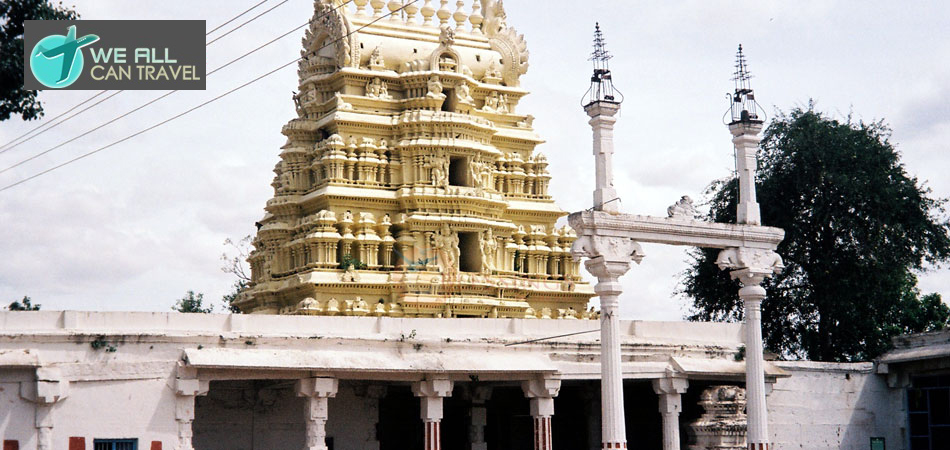Legend Of Sri Kalahasti Temple
According to Puranas, a spider (Sri), a snake (Kala) and an elephant (Hasti) worshipped the Lord here and attained mukti (salvation). Hence the Linga is known as Sri Kala Hasti Eshwara. This legend is very similar to that of the Jambukeshwaram temple in Tiruvanaikkaval in Tamil Nadu, which is also another Pancha Bhutha Sthala, dedicated to Appu Linga (Water).
The hills are closely associated with a legend on a tribal hunter and an ardent Shiva devotee Kannappa. His original name was Thinna. One day he noticed a priest performing Shiva puja and followed it regularly. In course of time, the hunter became so devoted that he started worshipping the Lord, offering meat of hunted animals. This infuriated the priest, who wanted to teach the hunter a lesson. But the Lord wanted to prove that between Him and a true devotee, irrespective of caste or creed, nothing else can stand. He decided to enact a divine drama. One day, an eye of the Lord started bleeding. The devout Thinna, unable to withstand this, gorged out one of his eyes and offered it to the Lord. The bleeding stopped and Thinna was extremely happy. But the Lord apparently wanted to test Thinnas devotion further. The second eye started bleeding now. Thinna was such a staunch devotee that without any hesitation, he scooped out his second eye also, holding the Lords bleeding eye with one of his feet. Moved by this act, Lord Shiva appeared before Thinna, called his devotee by the name Kannappa. (kan in Tamil means eye) and gave him mukti (salvation). The priest, who witnessed this high drama hiding himself in the neighbourhood, realised what true devotion is. In commemoration of this legend, the hill was named after Kannappa and he is immortalised as one of the 63 Saivite saints (63 Nayanmars).
 >> Agasteeshwara Temple
>> Agasteeshwara Temple >> Anantha Padmanabhaswami Temple
>> Anantha Padmanabhaswami Temple >> Ananthasana Temple
>> Ananthasana Temple >> Annapoorneshwari Temple
>> Annapoorneshwari Temple >> Arunachaleshwar Temple
>> Arunachaleshwar Temple